9 TRT Mistakes You Should Know
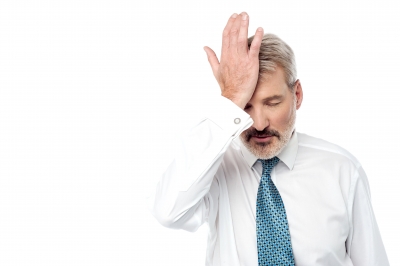 Here are some of the most common TRT mistakes that patients and even doctors make when following a testosterone therapy.
Here are some of the most common TRT mistakes that patients and even doctors make when following a testosterone therapy.
TRT Mistakes #1: Choosing a treatment plan that does not suit your personality or lifestyle
Many TRT doctors only prescribe the testosterone protocol they are comfortable or familiar with, whether it is gel, injection or even pills. However, not all protocols fit every person’s personalities or lifestyles. For instance, if you sweat a lot or do lots of workout, using transdermal patches or creams won’t be as effective as testosterone injection as the testosterone content of transdermal patches won’t be completely absorbed.
Another thing, if you are afraid of needles, testosterone injection will surely be the most uncomfortable situation. Say, you are fine with needles, but what if your doctor does not want to teach you how to inject on your own? Do you have time to drive to his office every week for your injection? Does it fit in with your schedule?
Look for a doctor who knows all TRT protocols and is diligent to ask you about your personality and lifestyle. Otherwise, you might end up discontinuing a TRT protocol because it didn’t suit your lifestyle, your work or your personality.
TRT Mistakes #2: Taking the wrong dose
When you encounter a person who speaks that TRT didn’t work for him, it often has to do with the dosage. You have to understand that testosterone replacement therapy varies from patient to patient. A dosage that could increase a person’s total T to 700 may only bring your up to 400. In addition, a total testosterone level of 700 might be enough for one person, letting him enjoy all the benefits of TRT but for you, it might not be enough.
The dosage and its frequency have to be adjusted from time to time so you make the most you can out of TRT.
TRT Mistakes #3: Cycling testosterone
Maybe because of reading too much bodybuilding magazines, some patients assume that testosterone should be cycled. Cycling is only suitable for users of anabolic steroids whose main goal is to add more muscle mass or enhance performance. However, it is not appropriate for TRT.
Simply put, when you use TRT, your testes take a rest from manufacturing testosterone. If you just stop TRT immediately, you are left with nearly zero testosterone in your body, and at this point, everything goes south. Decreased libido, weight and depression set in. This means that all the benefits you enjoyed with TRT revert. If you decide to stop using testosterone for some reason, work with your doctor to ensure you’re doing it effectively and safely.
TRT Mistakes #4: Wrong Management of Possible Side Effects
Nearly all possible TRT side effects can be managed easily, whether they include hair loss, acne, moodiness or an increase in hematocrit or PSA (prostate-specific antigen). It is important to manage these side effects effectively as it is necessary for the long-term success of your testosterone therapy.
Of course, no one wants to experience these side effects through TRT only to be replaced by another set of side effects. Oftentimes, it is only a question of dosage adjustment or the delivery system but they may sometimes require extra medications.
TRT Mistakes #5: Not living a testosterone-friendly life
Smoking, being overweight, drinking in excess, not having enough sleep, avoiding exercise and taking blood sugar for granted are some of the biggest TRT mistakes that you should avoid. These shouldn’t be part of your lifestyle. Testosterone replacement therapy can create a 180 degree turn in your life. It can make you feel like in your 20s or 30s.
All those bad habits mentioned can greatly deplete your testosterone reserve and no amount of TRT can compensate to offset such kind of lifestyle. It’s best to practice as many healthy habits as possible to make your TRT experience better.
TRT Mistakes #6: Poor compliance
Testosterone therapy requires 100 percent commitment. Like any medication, if you forget to inject or rub cream after a morning shower, it’s not going to give you its expected results. Failing to administer or apply it and it will not work and the long-term outcome will be compromised and unsatisfying.
In addition, poor compliance to TRT has its own inherent consequences. When your T levels keep on fluctuating from highs to lows, you could experience possible swings in your performance, energy and functionality.
There are lots of ways to help you remember your application or injection schedule. You can mark your calendar beforehand, place notes on your fridge or use mobile apps. Find one that will work for you.
TRT Mistakes #7: Choosing the wrong doctor
Today, more and more dentists now provide Botox injections, but that is definitely not part of their training and they are not more qualified, as far as education is concerned, to provide Botox more than a plastic surgeon or a dermatologist. But many dentists see it as a way to augment their income.
On a similar note, many doctors have joined the TRT bandwagon. They do not have the expertise to give testosterone, but they simply do it as a way to increase their income. The problem is, there’s more to TRT than just giving a prescription. Testosterone therapy isn’t just simply elevating your T levels, it is helping your patients find their optimal T levels.
Further, you need one who is knowledgeable in managing any possible side effects of TRT, including other aspects of the TRT science such as the adjunctive therapies.
Finally, you need one who applies what he prescribes. In this case, a doctor who is under TRT himself, who lives a healthy lifestyle and exercises, has the firsthand knowledge into TRT compared to a conventional doctor who only prescribes TRT on the side.
Consider the possible costs before choosing a doctor as well. Do your own homework in finding the right doctor for you.
TRT Mistakes #8: Overlooking estrogen levels
As mentioned in Number 2, the leading cause for having less stellar results with TRT is wrong dosage. The second most common problem among patients who say TRT didn’t work for them is the failure to keep track of their estrogen levels.
When the body metabolises testosterone, it turns into other chemicals such as DHT (Dihydrotestosterone) and estradiol. Estradiol is a metabolite of estrogen, the major hormone in women. Though men require a certain level of estrogen to maintain vascular health, excessive levels can cause gynecomastia, weight gain, extra body fat and subtle mental changes. Excessive estrogen can also hinder the benefits of TRT.
This problem can be very easy to control, but first, you have to find a capable TRT doctor to recognize and fix it.
Hormone Therapeutics Testosterone Therapy
Being a leading provider of low testosterone therapy solutions, we are always looking for newer ways to improve blood testosterone levels for our patients. We believe on improving testosterone levels with not only different testosterone treatment options that we offer, but also with diet, exercise, and therapeutic methods. Over the years, we have seen that our patients have greatly benefited from our Low-T therapy and treatment solutions, and our network of patients have grown across across all major cities of United States, including: Los Angeles, Houston, Miami, Chicago, Jersey City, and Seattle.
If you or a loved one is dealing with low blood testosterone levels, contact us today to get a free evaluation of your Low-T symptoms and see how our treatment options can help you with your low testosterone.
Sign up today and Get our ebook, ‘Naturally Increase Your Testosterone Levels’ absolutely FREE.

9 TRT Mistakes You Should Know
Saleamp Design January 20th, 2017
Posted In: Testosterone Therapy
Tags: cycling, DHT, dihydrotestosterone, dosage, dose, E2, estradiol, estrogen, gynecomastia, testosterone, testosterone mistakes, testosterone protocols, Testosterone replacement therapy, testosterone side effects, testosterone therapy, TRT, TRT dose, TRT mistakes, TRT protocols, TRT side effects
What You Need to Know about Testosterone Injection Protocol

Many guys find testosterone injection intimidating, perhaps because there isn’t enough information about it to get started. Men ask for complete details and for that, below is a brief discussion on what you need to know about TRT when getting started.
Testosterone Injection Protocol
- 1.0 mg Arimidex (Anastrozole) per week in divided doses
- 250 IU Human Chorionic Gonadotropic injected subcutaneously every other day
- 100 mg testosterone enanthate or cypionate given per week, could be two or more depending on doctor’s advise
Testosterone injection done once a week causes spikes in the level of testosterone followed by lows. This can make you feel worse by the end of the end compared to your pre-TRT stare. Later on, the dead zone gets broader, feeling no relief with testosterone injection. This makes injecting twice a week or every other day (EOD) much better.
When you have frequent injections, the volumes are too small, using #29 0.5ml 50IU insulin syringes. You can inject in the muscle at the side of your thighs (vastus lateralis). The injection loads very slowly, however, the tiny plunger causes very high pressures. Never use 1.0ml syringes. The same size of syringe can be used for HCG injections.
Small needles cause less muscle damage. Some use #25 needle but this may not be faster compared to 50IU insulin needles. A clinical research has found that testosterone injection through subcutaneous tissue, which is under the skin into the body fat, provide a steadier levels of testosterone and enhances sense of well-being.
For men who exercise, sweat or shower a lot, transdermal testosterone gels and creams are not advised. Transdermal creams and patches are quite hefty and about 10 percent only of its testosterone content is absorbed. Also, men who have low levels of thyroid hormones don’t efficiently absorb testosterone administered topically.
Some people absorbs transdermal creams at the beginning, however, changes in the skin can prevent absorption after some time. With testosterone injections. There are no uncertainties or limitations when it comes to delivery of the drug.
Guidelines on hCG Injection

Human Chorionic Gonadotropin (hCG) is a water-based peptide hormone that is injected to replenish lost luteinizing hormone (LH) that TRT suppresses. A lack of hCG can result to deactivation of LH receptors present in the testes. This results in:
- Shrinkage of testes. For some, the testes can eventually lead to testicular atrophy. The degree of shrinking differs from person to person, but is more common among older men.
- Fertility can be greatly affected. If you want an offspring, hCG injection is necessary. If not given, it may greatly reduce fertility or you may not recover fertility.
- Less pain sensation. When the testes shrinks, some men feel pain in their testes. You can avoid this situation by injecting hCG.
- When there’s a huge dearth of hCG and LH, the scrotum shrinks too and pull up to the body, giving the pre-pubescent appearance. This isn’t good for a person’s body image perception, and may also affect how women see you sexually.
- Promotes pregnenolone production. Testes are the major producer of the hormone pregnenolone – a precursor to all steroid hormones such as cortisol, testosterone, DHEA, estrogen among other. It is also vital for proper mental functioning. hCG injection prevents a drug-induced deficiency of pregnenolone. People who are on TRT without hCG and then just start hCG reported a significant improvement on their mood, that most attributed to increase in pregnenolone levels.
When you inject hCG, you administer it into the fat beneath the skin the same as diabetics administer insulin. Research on the use of subcutaneous injection in men has showed the effectiveness of 250IU EOD dose. You can look for diabetes patient education material on how to administer insulin injection to be used for testosterone injection or hCG.
Guidelines on Anastrazole and Aromotase Inhibitors
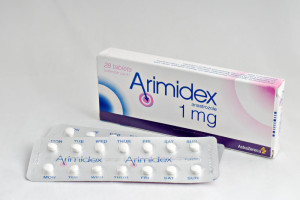
Elevated serum estradiol/E2 (30pg/ml and above) can interfere many benefits of testosterone injection. A serum estradiol equivalent to 22pg/ml is near optimal and to be able to get near this level, a person should take Anastrozole. Many men who began with TRT experienced favourable results that later on faded as estrogen levels increase.
My advice is to begin Anastrozole at 1.0mg per week in divided doses beginning at the day of your first injection. Then follow up estrogen lab tests for any necessary Anastrozole dose adjustments. It is not a good idea to wait and check if your estrogen levels increase before taking action. Take Anastrozole EOD if possible.
Testosterone injection with a dose of 100mg should result in 800 to 900 total testosterone (TT) range. While this is a good result, monitor your free testosterone (FT) or the bio-available testosterone. Some doctors won’t bother looking at the TT numbers at all. With age, SHBG (Sex hormone-binding globulin) levels increase while FT levels decrease.
See, a TT of 1000 of a young man won’t be the same as the TT of 1000 for an older man with high SHBG levels, because the FT level of the older man will likewise be well below, even though they have the same TT. Lab ranges presented on lab reports are age-adjusted.
Further, you have to know about prostate-specific antigen (PSA), problems in the prostate and digital rectal exam. Estrogen is a major factor of enlarged prostate or BPH (Benign prostatic hyperplasia). Many find that decreasing estrogen to 22pg/ml improves their urine flow as well as BPH. You also have to monitor your haematocrit levels as part of routine lab work.
Hormone Therapeutics Testosterone Therapy
Being a leading provider of low testosterone therapy solutions, we are always looking for newer ways to improve blood testosterone levels for our patients. We believe on improving testosterone levels with not only different testosterone treatment options that we offer, but also with diet, exercise, and therapeutic methods. Over the years, we have seen that our patients have greatly benefited from our Low-T therapy and treatment solutions, and our network of patients have grown across across all major cities of United States, including: Los Angeles, Houston, Miami, Chicago, Jersey City, and Seattle.
If you or a loved one is dealing with low blood testosterone levels, contact us today to get a free evaluation of your Low-T symptoms and see how our treatment options can help you with your low testosterone.
Sign up today and Get our ebook, ‘Naturally Increase Your Testosterone Levels’ absolutely FREE.

What You Need to Know about Testosterone Injection Protocol
Saleamp Design January 17th, 2017
Posted In: Testosterone Therapy
Tags: anastrozole, aromatase inhibitors, free testosterone, HCG, Human Chorionic Gonadotropin, LH, Luteinizing Hormone, pregnenolone, prostate-specific antigen, serum estradiol, testicular atrophy, testosterone, Testosterone Enanthate, testosterone injection, Total Testosterone, TRT, TRT protocol
The Effect of HCG Therapy with Testosterone in Preserving Fertility, Libido and Testicle Size
What is HCG Therapy?
Human Chorionic Gonadotropin is the glycoprotein hormone that mimics luteinizing hormone, a hormone produced by pregnant women by a growing embryo right after conception. The action of HCG is to prevent the disruption of corpus luteum in the ovary and to maintain the production of progesterone, another important hormone during pregnancy. HCG does a key role in the development of egg in the ovary and triggers the release of egg during ovulation. Further, HCG can be used to stimulate ovulation and address infertility in women.
If you’re confused what HCG has to do among men, then continue reading.
HCG therapy is given among young boys when their testicles didn’t go down in their scrotum as it should be. HCG is also important in preventing testicular shrinkage when using testosterone or anabolic steroid for a long time.
HCG Therapy on Testicle Size
Once testosterone is replaced, it stimulates the production of gonadotropin releasing hormone (GnRH). When GnRH isn’t present, the release of luteinizing hormone is halted by the pituitary gland. Without LH, the testicles couldn’t produce testosterone for the body. A decrease in testosterone can cause testicular shrinkage but once they are replaced, they start to enlarge again and immediately produce testosterone when HCG therapy is administered. HCG Therapy enhances a man’s testes in producing more testosterone.
HCG, when administered in small doses two to three times a week with testosterone replacement, can treat the reduced level of intratesticular testosterone. HCG is believed to have an LH-mimicking action, as well as the increase in the production of intratesticular testosterone. This is one of the reasons why many men are able to keep their fertility and libido when using 500 IU of HCG therapy with testosterone.
According to recent studies, it is now possible to maintain normal quality of sperm using the above ways without using FSH (follicle-stimulating hormone). Gonadotropin shouldn’t be ignored since it is necessary for sperm production.
Where does HCG Therapy come from?
Human Chorionic Gonadotropic is derived from the pregnant women’s urine or from other genetic modifications. The product is commonly available by prescription in different brand names such as Pregnyl, Profasi, Novarel and Follutein.
HCG comes in the form of a powder contained in a vial of 3,500 IU; 5,000 IU; 11,000 IU and more. It is better to contact a pharmacy and request to make vials for you in various IU amount. The vial comes with a 1 ml of bacteriostatic water as a diluent.
How is it administered?
HCG therapy is given as an injection under the skin or into the muscles. However, these two methods are still being debated if which one is better. The number of IUs for every injection varies on the amount of bacteriostatic water added to the powder. Bacteriostatic water is a fluid that contains preservatives. The water is added to the powder to reconstitute it before administration. When refrigerated, it has the ability to preserve the HCG for up to six weeks. It is important that you use ultrafine insulin needle when injecting HCG through the skin.
Conclusion:
HCG therapy has been proven as one of the best methods to address testicular shrinkage. When a person’s testes shrink, it can greatly affect his psychological and emotional well-being and thus, having an impact on his sex life. To prevent testicles from shrinking and preserve libido, HCG therapy is one of the best treatment options to consider.
Testosterone Therapy
Being a leading provider of low testosterone therapy solutions, we are always looking for newer ways to improve blood testosterone levels for our patients. We believe on improving testosterone levels with not only different testosterone treatment options that we offer, but also with diet, exercise, and therapeutic methods. Over the years, we have seen that our patients have greatly benefited from our Low-T therapy and treatment solutions, and our network of patients have grown across across all major cities of United States, including: Los Angeles, Houston, Miami, Chicago, Jersey City, and Seattle.
If you or a loved one is dealing with low blood testosterone levels, contact us today to get a free evaluation of your Low-T symptoms and see how our treatment options can help you with your low testosterone.
Sign up today and Get our ebook, ‘Naturally Increase Your Testosterone Levels’ absolutely FREE.

The Effect of HCG Therapy with Testosterone in Preserving Fertility, Libido and Testicle Size
Saleamp Design January 10th, 2017
Posted In: Hormone Replacement
Tags: HCG, HCG therapy, Human Chorionic Gonadotropin, intratesticular testosterone, libido, Luteinizing Hormone, testes, testicular shrinkage, testosterone, testosterone replacement
Ketogenic Diet – A Great Testosterone Booster
When done properly, a ketogenic diet, a.k.a Keto Diet, is a simple, effective tool to gain more muscles and lose fats by restricting carbs and turning fats into a fuel source through Ketosis.
If you will follow the standard Ketogenic diet, you will be limiting carbs to less than 30 grams per day. YES – only 30 grams of carbs, which is equivalent to one medium-sized banana. Your normal daily foods that have carbs include: Wheat, Bread, Cereal, Pasta, Milk, Most fruits, and Potatoes (Sweet Potatoes). These foods, although referred to as good carbs, cannot be eaten in a Ketogenic Diet. The kind of carbs found in these good carbs sources are not allowed in the Keto Diet. What you’ll rather eat is fats, and lots of it.
Ketogenic Diet
A Ketogenic Diet requires two things:
- Maximize the intake of fat
- Limit the intake of carbohydrates
The primary reason for restricting carbohydrates while taking the large amounts of fat, is that when fat turns to be the main source of fuel for the body, it is broken down into Ketones by the liver. You’ll function with these ketones rather than glucose, which is the by-product of carbohydrates.
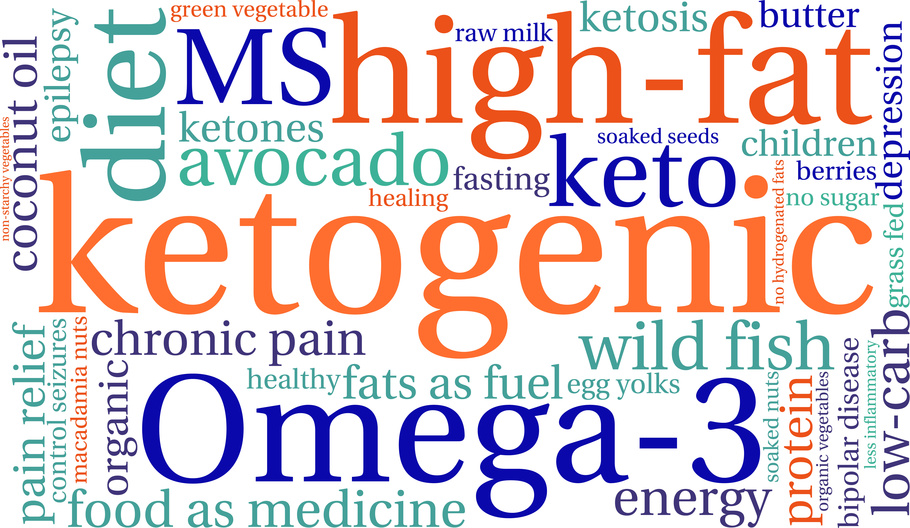
When you are in a state of using ketones as fuel, you are now in state of Ketosis, which means the body is deprived of glucose and all the energy consumed by the body is coming from ketones. This state allows for rapid fat loss since stored body fat is able to be burned for fuel due to low levels of insulin. Moderate to high levels of insulin prevent the metabolism of stored fat. When we eat carbs, our blood sugars rise causing insulin levels to rise.
Diet is one of the most influential components to maintaining proper brain health as we age, and to help maintain memory and cognitive function, it is important to take brain health nutrients to fight aging. READ MORE
Ketosis – ‘the Keto Diet’
Under Keto Diet, you’re going to eat plenty of fatty foods. Though it seems like there are a dearth of healthy fatty foods, there are still lots of nutritious foods to choose from.
- Eggs
- Steak
- Full fat cheese
- Full fat cream
- Bacon
- Butter
- Fish
- Low carb protein shakes
- Mushrooms
- Green vegetables
- Roasted chicken
- Coffee
- Other meats
Once you get used to eating foods with low carbs and high fat contents, it will be very easy for you to lose weight and attain the missing energy and passion in your life. The initial diet shift is not an easy thing to do, but definitely something that brings a lot of positive changes to your life. Most people have experienced not only weight loss, but also benefits like:
- Improved thyroid function
- Enhanced mental focus and brain function
- Increased testosterone levels
- Steady supply of energy
- Reduced risk of cancer
- Reduced inflammation induced by carbohydrates intake
- Reduced water retention
Testosterone Therapy
Being a leading provider of low testosterone therapy solutions, we are always looking for newer ways to improve blood testosterone levels for our patients. We believe on improving testosterone levels with not only different testosterone treatment options that we offer, but also with diet, exercise, and therapeutic methods. Over the years, we have seen that our patients have greatly benefited from our Low-T therapy and treatment solutions, and our network of patients have grown across across all major cities of United States, including: Los Angeles, Houston, Miami, Chicago, Jersey City, and Seattle.
If you or a loved one is dealing with low blood testosterone levels, contact us today to get a free evaluation of your Low-T symptoms and see how our treatment options can help you with your low testosterone.
Sign up today and Get our ebook, ‘Naturally Increase Your Testosterone Levels’ absolutely FREE.
Ketogenic Diet – A Great Testosterone Booster
Umer Chaudhary December 7th, 2016
Posted In: Health & Wellness
Tags: blood acidosis, carbohydrates, diabetes, fat loss, glucose, high fat diet, insulin, keto diet, ketogenic diet, ketones, ketosis, testosterone, weight loss
How to Avoid Testosterone Harming Chemicals and Endocrine Disruptors
Endocrinologists are warning every one of the effects of exposure to every day household chemicals and these chemicals have been coined “endocrine disruptors”. The endocrine disruptors interfere with our body’s endocrine system, and hormones, and can cause weight gain and learning disabilities.
Xenoestrogen is one of those notorious endocrine disruptors that imitates estrogen when in contact with the human body. If men are exposed to excessive amounts of this estrogen-imitating chemical, it will drop his testosterone levels. Once we realized how bad Xenoestrogen was for the body we then looked around and saw it everywhere!! Xenoestrogen is found is plastics, shampoos, gasoline, cows and toothpaste.
Xenoestrogen is one of those ubiquitous chemicals in today’s manufacturing society that some endocrinologists believe it is the reason that testosterone levels are lower in today than ever before. This is also the believed reason that twice as many boys are being born with Hypospadias than in the past. Hypospadias is a birth defect where the urethra opening is on the underside of the penis and not at the tip. This is why it is so important for expecting Moms to stay away from xenoestrogens during the pregnancy.

Avoiding Endocrine Disruptors
Here are the best ways to avoid Xenoestrogens and other endocrine disruptors:
 Store food in glassware
Store food in glassware
Never, ever, eat heated food in plastic containers. Most modern plastics contain phthalates. Phthalates give plastic flexibility, durability, and longevity. Phthalates, another endocrine disruptor, also confuse your endocrine system by imitating estrogen.
 Avoid exposure to pesticides and gasoline
Avoid exposure to pesticides and gasoline
Limit your exposure to these products that contain endocrine disruptors. Wash your hands thoroughly if you do come into contact with gasoline and pesticides or other endocrine disruptors.
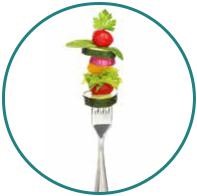 Avoid BPA
Avoid BPA
BPA is a chemical that lines food cans and thermal printer paper and studies have shown that it reduces testosterone.
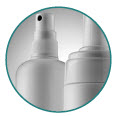 Eat organic
Eat organic
Pesticides and hormones often imitate estrogens in our body. When possible, eat organic that avoids these chemicals. Always wash your fruits and vegetables before eating them and use meat and milk from cows untreated with hormones.
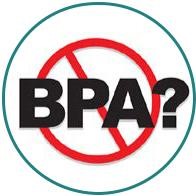 Use natural grooming products
Use natural grooming products
Many (75%) of these products contain parabens, which are another type of endocrine disruptors. Here is a list of some of the natural, paraben-free grooming products available at Whole Foods and most health food stores:
- Jason Shampoo
- Grandpa’s Pine Tar Soap
- Tom’s of Maine Toothpaste
- Crystal Rock Deodorant
Hormone Therapeutics aims to help people looking to improve and optimize their health through natural means or through the guidance of our physicians.
Don’t miss out our free weekly tips and news on Low T, hormone balancing, healthy living, nutrition and a lot more.
Want more?
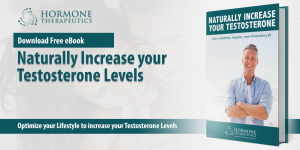
Sign up today and Get our ebook, ‘Naturally Increase Your Testosterone Levels’ absolutely FREE.
How to Avoid Testosterone Harming Chemicals and Endocrine Disruptors
Saleamp Design November 18th, 2016
Posted In: Health & Wellness
Tags: BPA, endocrine disruptors, gasoline, glassware. Pesticides, organic, testosterone, Testosterone replacement therapy, xenoestrogens
Effective Testosterone Boosting Exercise to Increase T Levels
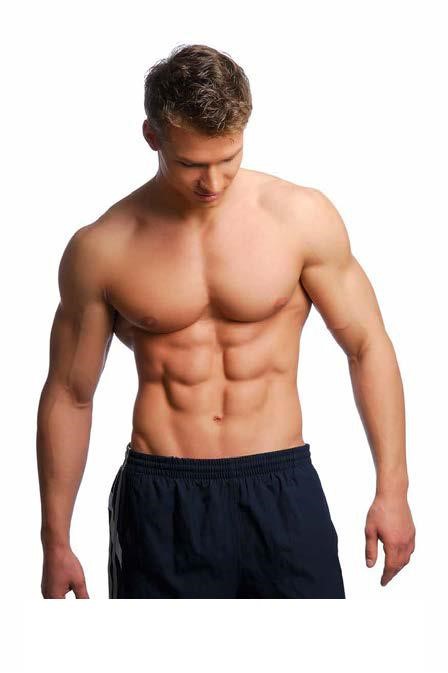
Testosterone boosting exercise can cause our body to produce more testosterone and by increasing muscle mass and decreasing body fat. Since adipose tissue converts testosterone into estrogen the more fat we drop through exercise increases our testosterone levels.
Testosterone Boosting Exercise #1: Lift Weights
One safe and effective testosterone boosting exercise is lifting weights. Rotating through the gym for a quick circuit on the weight machines is not enough. Here is the advice one expert gives on developing the proper weight lifting routine to really boost your testosterone levels:
 Use compound lifts
Use compound lifts
Focus on squats, bench press, deadlift, and shoulder press as your main lifts. Definitely focus on exercises that work the large muscle groups. The more work you put into the larger muscle groups the better the return you will see on increased testosterone levels.
 High volume
High volume
Workout volume is determined by the following formula: sets x reps x weight. Studies have shown that focusing on high volume workouts results in greater testosterone increases.
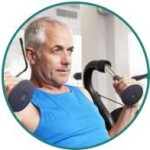 Don’t take sets to failure
Don’t take sets to failure
There is nothing wrong with going for it on your last set but don’t do it for all your sets.

Rest
Give yourself a minute to two minutes between each set.
Testosterone Boosting Exercise #2: High-Intensity Interval Training (HIIT) Training
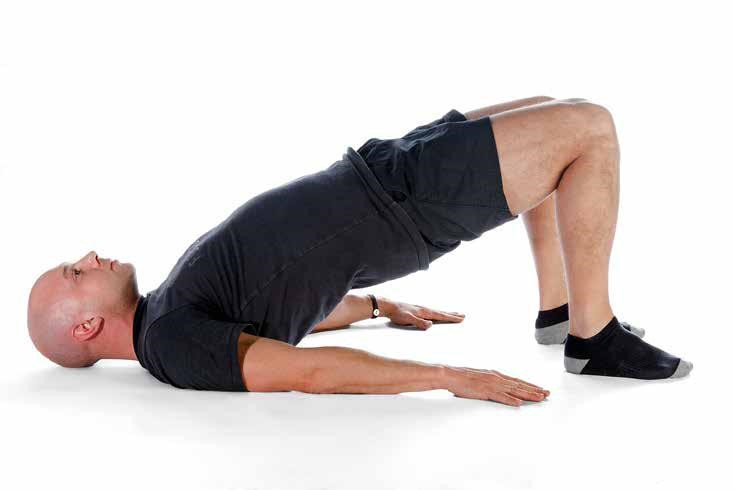 Another effective testosterone boosting exercise is HIIT Training. Studies have shown that HIIT workouts boost testosterone levels by similarly pushing your physical limits. HIIT stands for High-Intensity Interval Training and calls for short, intense bursts. Your program typically alternates bursts of energy and less-intense recovery period followed by a less-intense cycle several times throughout a workout. HIIT also improves athletic conditioning and fat metabolism, while increasing muscle strength.
Another effective testosterone boosting exercise is HIIT Training. Studies have shown that HIIT workouts boost testosterone levels by similarly pushing your physical limits. HIIT stands for High-Intensity Interval Training and calls for short, intense bursts. Your program typically alternates bursts of energy and less-intense recovery period followed by a less-intense cycle several times throughout a workout. HIIT also improves athletic conditioning and fat metabolism, while increasing muscle strength.
There are many online HIIT workouts. One example of an HIIT program is this simple wind sprint routine:
- Sprint 40 yards as fast as possible
- Walk back slowly
- Sprint again
- Work up to 40 sets of 40 yard sprints
Don’t over train!
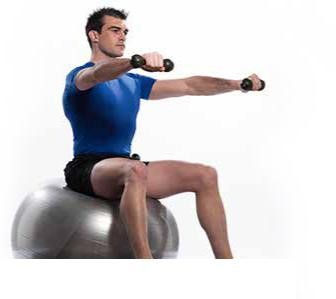 Over exercising and doing extreme endurance tests like marathons and triathlons actually sabotages testosterone production. Studies have shown that overtraining can reduce testosterone levels significantly. While exercising hard is important, giving your body rest to recuperate from the damage is just as critical.
Over exercising and doing extreme endurance tests like marathons and triathlons actually sabotages testosterone production. Studies have shown that overtraining can reduce testosterone levels significantly. While exercising hard is important, giving your body rest to recuperate from the damage is just as critical.
Give yourself at least two days of rest per week. Move more. Try and keep moving and being active each day. Keep the blood flowing and muscles working. If you have a desk job, take frequent breaks. Take walks every 30 minutes. Schedule walking meetings. Take the stairs. Walk or bike to work if possible. Make these testosterone boosting exercise routines and just keep moving!
Hormone Therapeutics aims to help people looking to improve and optimize their health through natural means or through the guidance of our physicians.
Don’t miss out our free weekly tips and news on Low T, hormone balancing, healthy living, nutrition and a lot more.
Want more?

Sign up today and Get our ebook, ‘Naturally Increase Your Testosterone Levels’ absolutely FREE.
Effective Testosterone Boosting Exercise to Increase T Levels
Saleamp Design November 11th, 2016
Posted In: Testosterone Therapy
Tags: bike, build, bulk, exercise, HIIT, intensity interval, lift, muscle, testosterone, testosterone boosting exercise, testosterone levels, training, walk, weight
Here’s What You Should Know about Testosterone Production
 Testosterone is important as it maintains our physical strength, our focus, and our mood, but do you an idea about testosterone production? How is it made?
Testosterone is important as it maintains our physical strength, our focus, and our mood, but do you an idea about testosterone production? How is it made?
It’s not just an academic question. An understanding of how our bodies produce testosterone leads to an understanding of what might cause our bodies to stop producing enough of the stuff, and understanding a problem is the first step to solving it.
Testosterone Production 101 – The Three Types of Testosterone
In essence, testosterone is a steroid hormone. The changes and benefits it triggers in the body are detailed right over here. The average male human creates 7mg of testosterone per day, but there are actually three different types. Not all of it is usable by the body, or at least not to produce the effects you’re probably looking for.
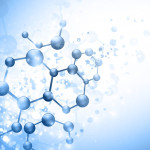 Free Testosterone
Free Testosterone
Free testosterone is so named because it has no attached proteins. It’s free to float through the bloodstream, and isn’t bonded to any other molecules. Free testosterone is the type of testosterone that has all those great physical and mental benefits, because it’s able to roam our bodies and activate receptors in various cells. Even though this is the kind of testosterone we think of as the most beneficial, it has the smallest concentration of the three. It only comprises about 2%-3% of our total testosterone levels. Everything we do for testosterone production is really meant to increase free testosterone, but the best way to do that is to raise our overall levels.
 SHBG-Bound Testosterone
SHBG-Bound Testosterone
This type of the male hormone makes up about 40%-50% of our total testosterone levels. It’s bound to SHBG (sex hormone-binding-globulin), which is a protein produced in the liver. It regulates the amount of free testosterone in the body. SHBG-Bound Testosterone is what’s known as “biologically inactive”, meaning it doesn’t actually have any other effect in our bodies beyond helping regulate our total levels. This type of T doesn’t have harmful effects either, but it is why a man might test with adequately high testosterone levels but still experience the symptoms of testosterone deficiency.
 Albumin-Bound Testosterone
Albumin-Bound Testosterone
This makes up the remainder of our total testosterone. It’s bound to the protein albumin, which is also produced in the liver. Its function is to stabilize fluid volumes between our cells. Albumin-Bound Testosterone is also biologically inactive, but unlike the SHBG-Bound variety, its bond can be broken. That converts it back into free testosterone, making the stuff sort of testosterone reserve supply.
About 95% of our testosterone is produced in the testicles. The rest is made in our adrenal glands, which is why the hormone is present in women as well. For men, though, it’s almost entirely the testicles.
It’s a pretty complex process that results in the male hormone. Learn about testosterone production in this basic rundown:
 The hypothalamus (part of the brain) secretes gonadotropin-releasing hormone. This stuff loops around to the back of the brain and hits the pituitary gland.
The hypothalamus (part of the brain) secretes gonadotropin-releasing hormone. This stuff loops around to the back of the brain and hits the pituitary gland.
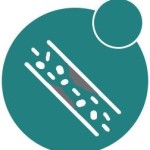 The pituitary gland receives the gonadotropin-releasing hormone, and responds by producing two more hormones. Follicle-stimulating hormone (FSH) and luteinizing hormone (LH). Both of these natural chemicals enter the bloodstream and make their way to the testicles.
The pituitary gland receives the gonadotropin-releasing hormone, and responds by producing two more hormones. Follicle-stimulating hormone (FSH) and luteinizing hormone (LH). Both of these natural chemicals enter the bloodstream and make their way to the testicles.
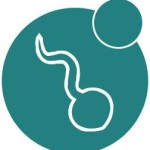 Once they’ve arrived down there, the FSH and LH do two different things. FSH initiates sperm production (important!), while LH kicks off testosterone production (just as important!)
Once they’ve arrived down there, the FSH and LH do two different things. FSH initiates sperm production (important!), while LH kicks off testosterone production (just as important!)
 The actual cells that create the testosterone are called Leydig cells. They work by converting cholesterol into testosterone. That cholesterol literally comes from the bloodstream, which is why a healthy level of T can actually improve your heart health. It’s also the reason eating eggs is so beneficial to testosterone levels!
The actual cells that create the testosterone are called Leydig cells. They work by converting cholesterol into testosterone. That cholesterol literally comes from the bloodstream, which is why a healthy level of T can actually improve your heart health. It’s also the reason eating eggs is so beneficial to testosterone levels!
 During testosterone production, it’s released by the testicles into the bloodstream. Most of the stuff attaches to SHBG and albumin, nullifying its effects. It’s the small amount that remains free that aids our strength, focus, sexual drive, and all the other great benefits of testosterone.
During testosterone production, it’s released by the testicles into the bloodstream. Most of the stuff attaches to SHBG and albumin, nullifying its effects. It’s the small amount that remains free that aids our strength, focus, sexual drive, and all the other great benefits of testosterone.
Here’s a handy chart of the HPA-axis:
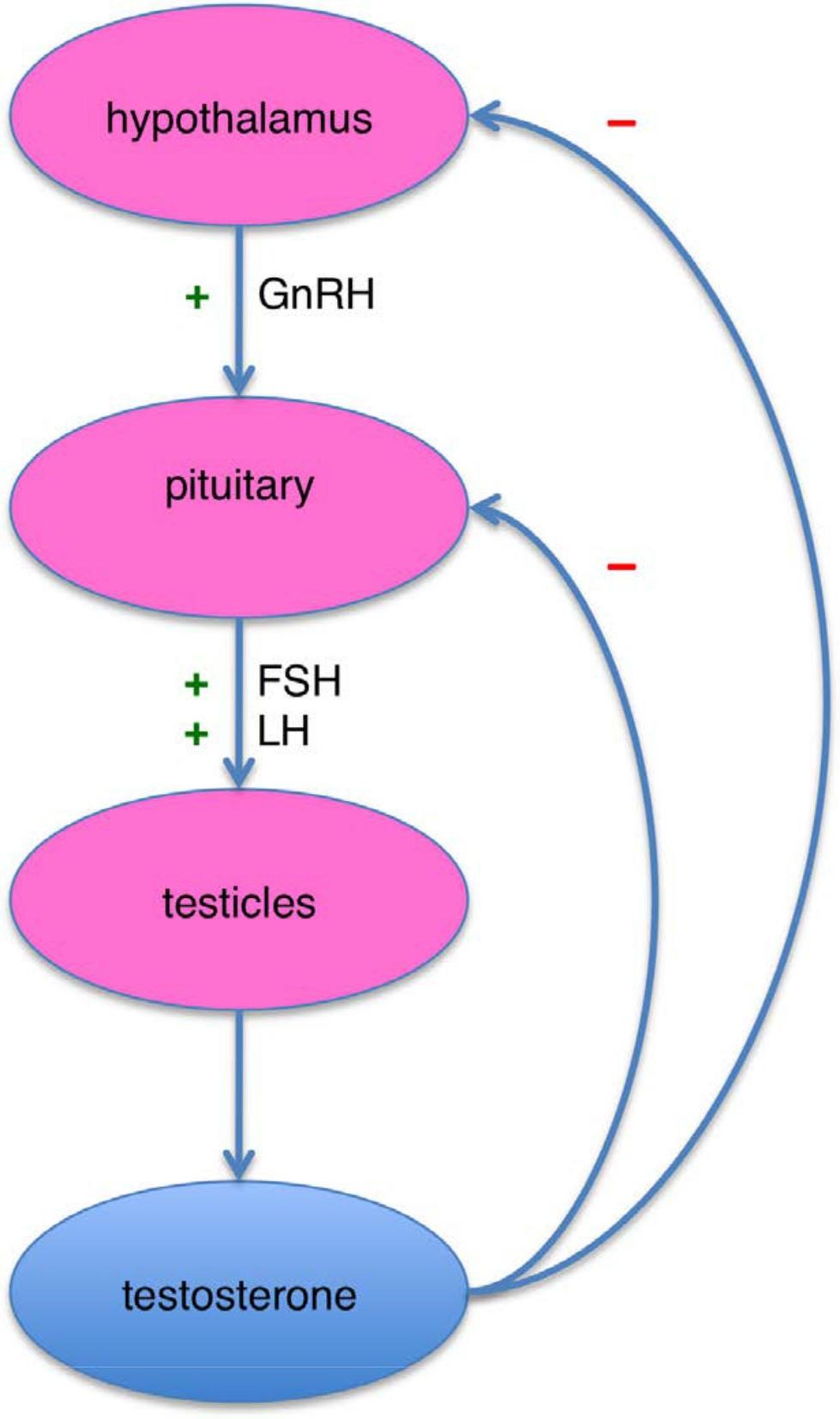
Image source: Wikipedia
In essence, testosterone is a steroid hormone. The changes and benefits it triggers in the body are detailed right over here. The average male human creates 7mg of testosterone per day, but there are actually three different types. Not all of it is usable by the body, or at least not to produce the effects you’re probably looking for.
Hormone Therapeutics aims to help people looking to improve and optimize their health through natural means or through the guidance of our physicians.
Don’t miss out our free weekly tips and news on Low T, hormone balancing, healthy living, nutrition and a lot more.
Want more?

Sign up today and Get our ebook, ‘Naturally Increase Your Testosterone Levels’ absolutely FREE.
Here’s What You Should Know about Testosterone Production
Saleamp Design November 4th, 2016
Posted In: Low T Info
Tags: albumin, biologically available, Follicle Stimulating Hormone, free testosterone, FSH, GnRH, growth hormone, HPA axis, hypothalamus, LH, low t, Luteinizing Hormone, pituitary, sex hormone-binding-globulin, SHBG, testicles, testosterone, testosterone levels, testosterone production
Here’s What You Should Know More about Testosterone Levels
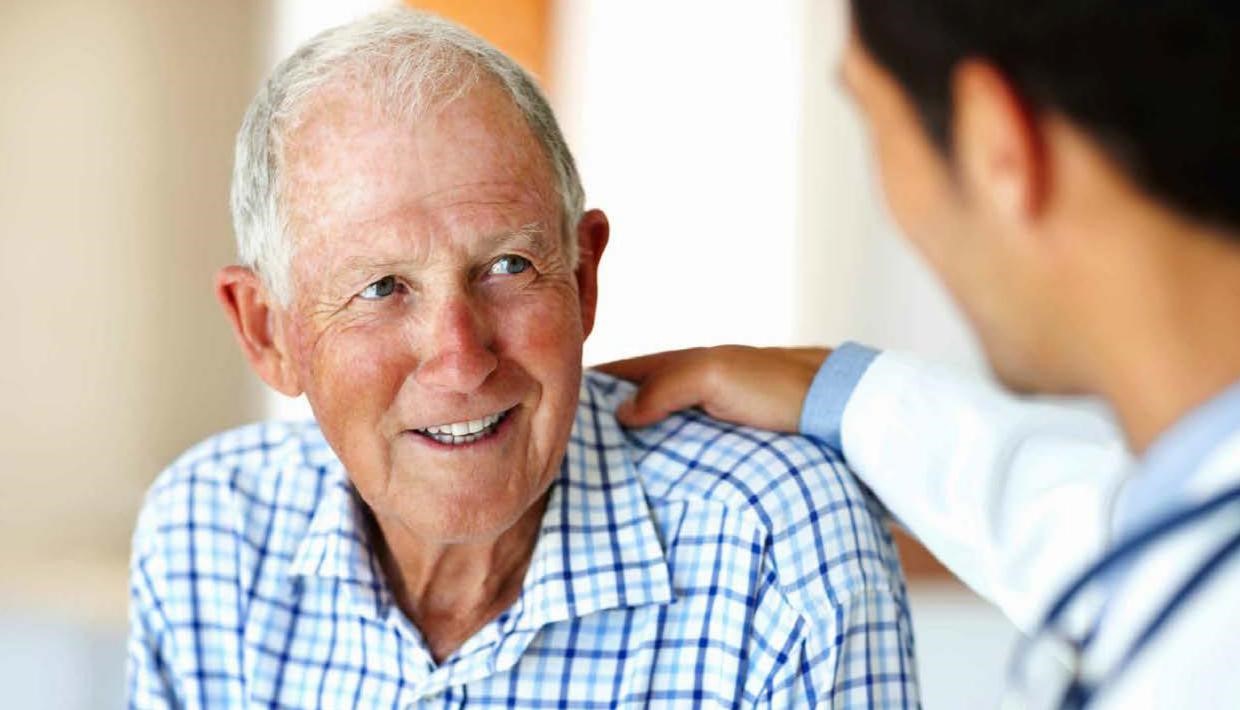 How Do I know my Testosterone levels?
How Do I know my Testosterone levels?
With all this information on testosterone and the benefits of maintaining proper testosterone levels, you might be wondering about the specific testosterone levels you have seen. What is a normal testosterone levels? How much testosterone are you supposed to have, and how do you find out your current level? Well, it’s a tricky question. Part of the problem is that despite years of efforts and calls for action, hormone testing is still not universally standardized.
There has been positive movement towards a standard set of testing, but we’re not there yet. The other issue is that many doctors don’t agree on just how much testosterone a person, male or female, should have in their bodies. There is a rough “normal range”, but some doctors seem to play a little fast and loose with the low and high ends of the range.
Many doctors and labs don’t take into account factors like age and physical condition, and it means that you might have to do some research on your own or see a specialist to really understand your testosterone situation.
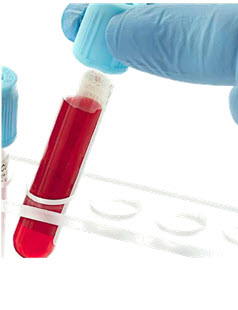 Flaws in the Accepted Blood Testing System
Flaws in the Accepted Blood Testing System
LabCorp uses a Total Testosterone range of 348 – 1197 ng/dl (nanograms per deciliter). According to this reference range, one man with a 355 ng/dl would be considered normal while his neighbor at 345 ng/dl would be considered to have low testosterone and if they were lucky their health insurance would cover Testosterone Replacement Therapy. Also, a neighbour across the street might have a Total Testosterone level of 1150 ng/dl and he would also be considered normal like the man with a 355 ng/dl. Only a few years ago LabCorp and the insurance companies considered 249 the lower end of normal rather than 348.
The biggest problem comes when age is not factored into the analysis and 355 ng/dl is considered normal whether the patient was 20, 40, 60 or 80?! It also does not matter if the patient was obese, super fit, thin, had a pituitary gland issue or exhibited any of the symptoms of low testosterone?!?!
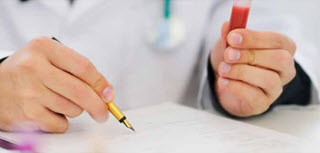 This is why having an excellent medical team to assess your blood tests, physical and medical history is critical. We rarely know what our baseline was from age 19 and everyone has their own sweet spot across Testosterone and all of the other hormones.
This is why having an excellent medical team to assess your blood tests, physical and medical history is critical. We rarely know what our baseline was from age 19 and everyone has their own sweet spot across Testosterone and all of the other hormones.
The fact that reference ranges don’t break patients down by age or health status explains why a 30-year-old man can go to his doctor with all of the symptoms of low T, only to be told that his T levels are fine because they’re within the “normal” range. If you’re 30 (or even 50), but have the same testosterone level as an 80-year-old, diabetic man, your doc may say you’re okay, but you’re still not going to feel good. Plain and simple.
Contact Hormone Therapeutics to get blood tested and a Physician evaluation of your results and treatment options!
Reference Ranges for Testosterone Levels in Men
So, in the interests helping you with of self-directed research, here are average testosterone levels for men up to age 54. The figure to pay attention to here is “Mean Total Test”, which is the average level for men of that age. This data is taken from a 1996 study involving hundreds of participants.
If you have your testosterone levels tested and your levels are approximately at the mean level for your age, then you probably don’t suffer from low testosterone.
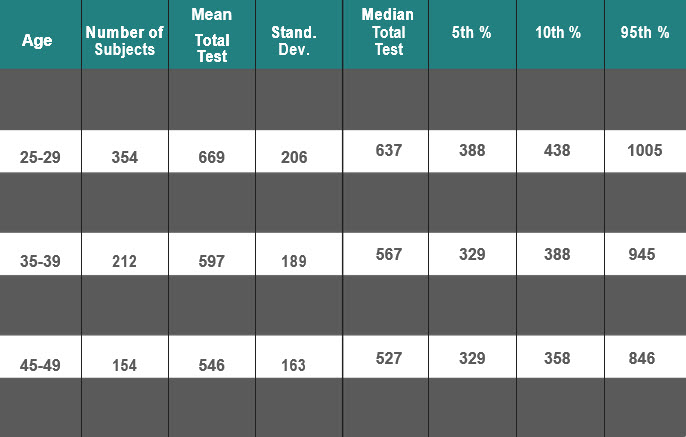
Optimal Testosterone Levels
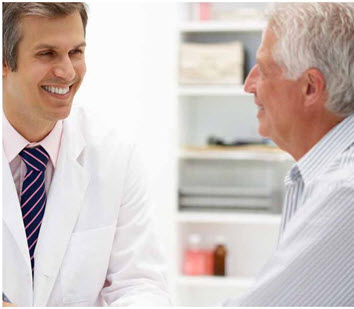 Of course, just because you’re not suffering from medically low testosterone doesn’t mean you wouldn’t benefit from more. Those numbers are the average levels only, not the best levels. Research hasn’t determined a hard and fast rule for the optimal levels of testosterone. Some men are fine at the low end of the normal range, while others need to be at the very top to feel their best. What’s normal and what’s optimal?
Of course, just because you’re not suffering from medically low testosterone doesn’t mean you wouldn’t benefit from more. Those numbers are the average levels only, not the best levels. Research hasn’t determined a hard and fast rule for the optimal levels of testosterone. Some men are fine at the low end of the normal range, while others need to be at the very top to feel their best. What’s normal and what’s optimal?
Anecdotal evidence shows that many men start to feel the effects of low testosterone at the 500 ng/dl mark. Although this shouldn’t be taken as gospel, it does seem that staying above 500 ng/dl is a good idea for most men.
Overly high levels of testosterone typically aren’t something people need to worry about. Although there are detrimental effects to having too much testosterone, such as thick blood and sleep apnea, excess testosterone isn’t a common condition. To be sure, it’s highly unlikely that anyone would reach those levels by following the natural and food-based advice listed here.
How to Test Your Testosterone Levels
Contact Hormone Therapeutics for a Free Low T evaluation and if you exhibits symptoms we will set up your comprehensive blood tests. Contact us right now!
Hormone Therapeutics aims to help people looking to improve and optimize their health through natural means or through the guidance of our physicians.
Don’t miss out our free weekly tips and news on Low T, hormone balancing, healthy living, nutrition and a lot more.
Want more?

Sign up today and Get our ebook, ‘Naturally Increase Your Testosterone Levels’ absolutely FREE.
Here’s What You Should Know More about Testosterone Levels
Saleamp Design November 1st, 2016
Posted In: Low T Info
Tags: blood test, blood tests, doctor, free evaluation, free testosterone, growth hormone, HGH, low t, low t doctor, low t physician, low testosterone, normal levels, physical exam, physician, pituitary gland, testosterone, testosterone levels, Total Testosterone
Here’s What You Should Know on How Testosterone Replacement Therapy Works
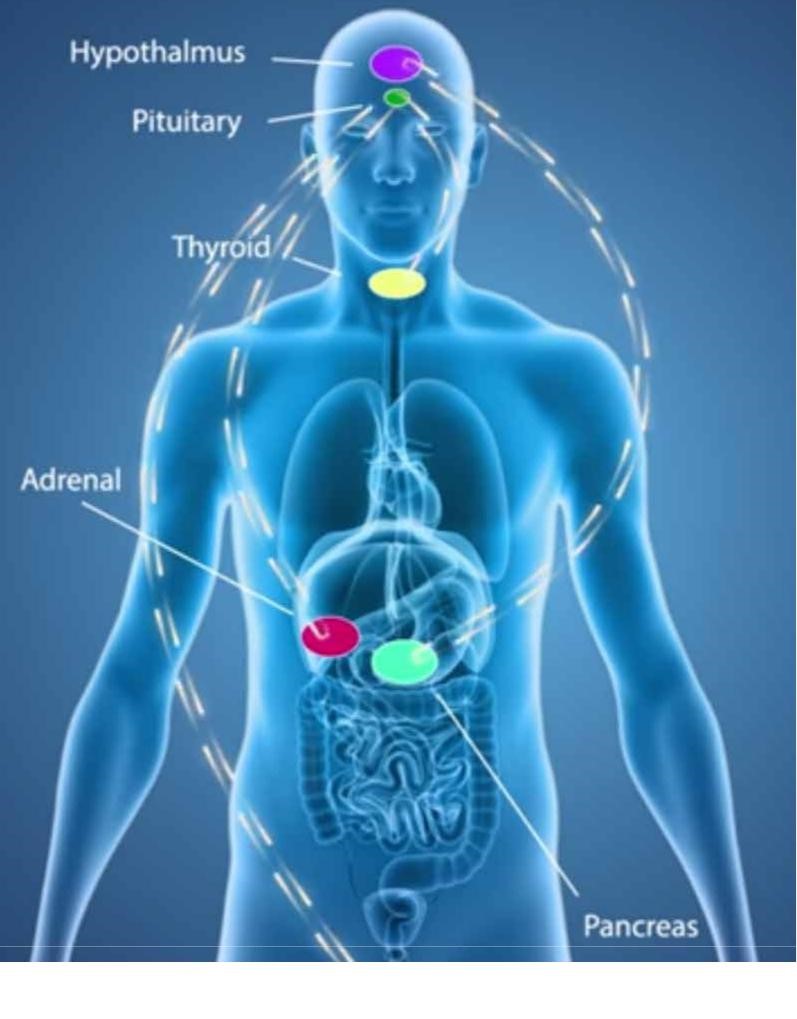 If you’ve been reading Hormone Therapeutics blogs and testosterone replacement therapy eBooks, you’re probably already completely aware of just how important testosterone is to male health. It boosts mental energy, physical energy, alertness, strength, sexual vitality, and just generally helps us live our lives better.
If you’ve been reading Hormone Therapeutics blogs and testosterone replacement therapy eBooks, you’re probably already completely aware of just how important testosterone is to male health. It boosts mental energy, physical energy, alertness, strength, sexual vitality, and just generally helps us live our lives better.
You might be wondering just how exactly it provides all these benefits, though. What’s the actual mechanism? What, precisely, does testosterone do?
The fact is, testosterone does all sorts of beneficial things in just about every part of the body. It’s a key hormone to maintaining our body systems, especially in men. Women actually also have small amounts of testosterone, but their bodies rely more on estrogen.
The importance of living with a fully functioning endocrine system has only really mattered this much in the past century as people are living longer due to improved medicine, sanitation and many other factors. 100 years ago the average life span was 48 and today it is 78 years. Many areas of the body do not hold up over time as well as others and require assistance like eye glasses, hearing aids or Lipitor. The same is true with balancing and optimizing the endocrine system through testosterone replacement therapy.
We now understand that a properly balanced endocrine system leads not just to the vanity aspects of it’s benefits but a healthier, happier, more effective and longer life.
Testosterone Replacement Therapy – How It Works
So to satisfy your scientific curiosity, here’s a high-level rundown of what testosterone does in men, across each main part of the body.
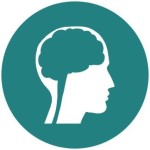 The Endocrine System
The Endocrine System
The endocrine system is where our bodies produce hormones. It’s a series of glands distributed around various parts of the body that, as a whole, keep our hormone levels at their proper levels.
Testosterone is a hormone, so it’s also produced by the endocrine system. The process starts in the brain at the hypothalamus. The hypothalamus tells the pituitary gland what the body’s overall level of testosterone should be. The pituitary gland then directs the testicles and, to a lesser extent, the adrenal glands to actually produce the stuff. This is called the HPA axis.
This is where Testosterone levels can be thrown off. Typically, hypogonadism is to blame for low testosterone levels, and can cause a multitude of health problems. Although it’s normal for testosterone production to peak at 19 and drop gradually over time, about 1% per year after age 30, for some people it can fall too fast. In those cases, testosterone replacement therapy is indicated.
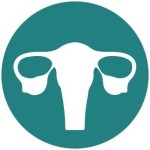 The Reproductive System
The Reproductive System
Testosterone production starts in male children surprisingly soon after conception. A seven-week old fetus has already developed enough to begin producing the hormone, as well as sperm.
If testosterone levels are too low later in life, a man can suffer from erectile dysfunction, low sperm count, and even prostate problems. Its bad news, and it’s why testosterone replacement therapy is so important under the right circumstances for men in need of hormone balancing and testosterone supplementation.
 Puberty
Puberty
Testosterone is responsible for male puberty, as well. It’s the reason we start growing hair in new places, our voice (and other things) drop, and our muscles start to develop.
When boys start to notice girls, that’s the work of testosterone, and it carries through later in life. Low testosterone levels can impact our libido, and it’s actually a two-way street. Periods of minimal sexual activity can actually cause testosterone levels to drop in response, which can cause erectile dysfunction and lowered libido. It’s a snake that eats itself, and it’s best avoided.
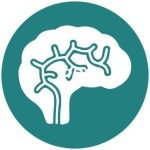 The Central Nervous System
The Central Nervous System
The central nervous system is how our body communicates with itself. It’s a network that lets glands and organs communicate to trigger production of hormones, among other things. Hormones, including testosterone, have all kinds of effects on the body and mind. Testosterone drives our competitiveness and self-esteem.
That means lowered testosterone levels can make us lose our motivation and spark. It can literally make us sad. Like sexual desire, it’s a two-way street. Engaging in competitive activities like sports can spike our testosterone, which in turn makes us more motivated to strive for success. Lowered testosterone can make us lose our motivation, and sitting around can further lower the testosterone levels.
 Skin and Hair
Skin and Hair
It starts at puberty. Hair starts growing in new and disturbing places. Pretty soon, we’ve got manly, hairy chests and armpits, as well as hair on points further south.
Testosterone is responsible for that, and lowered testosterone levels can have the opposite effect. Our body hair might actually start to fall out if testosterone gets too low!
The other thing about puberty, acne, is also an effect of testosterone. For that reason, you might need to stock up on some acne cream or gel when you’re undergoing testosterone replacement therapy. It’s a small price to pay for the benefits you’ll receive.
 Muscles, Fat, and the Skeleton
Muscles, Fat, and the Skeleton
Testosterone is a major factor in the development of our muscles, both size and strength. Testosterone levels work to improve our muscles in a few different ways.
- It stimulates neurotransmitter production, which in turn tell our muscles to grow.
- It tells the nuclear receptors in our DNA to synthesize protection.
- It increases growth hormone levels
What that means overall is that testosterone makes strength training more effective. If you’re been hitting the weights and not seeing much gain, low testosterone levels might be to blame. The male hormone is also important to our skeleton. It increases bone density, and it’s what makes our bone marrow manufacture red blood cells. If you have low testosterone production, you might actually become more brittle and prone to fractures.
Finally, testosterone is important to burning fat, and low levels can be responsible for a higher body fat percentage.
Overall, testosterone levels are vital to your physical health.
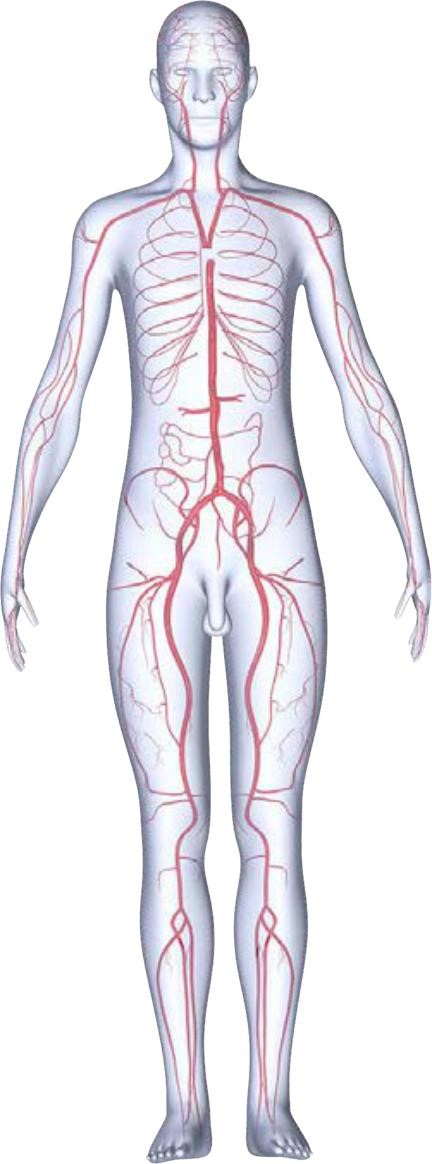 The Circulatory System
The Circulatory System
Finally, testosterone is crucial to the health of our blood. As mentioned, it improves our red blood cell count, which is a positive because it carries more oxygen throughout our body. However, a physician needs to monitor and manage red blood cell and hematocrit levels to ensure blood does not get too viscous.
Some studies have shown that testosterone replacement therapy can also make our hearts healthier. These studies suggest that the hormone is effective in reducing cholesterol and blood pressure. It can even help destroy harmful clots.
Although testosterone replacement therapy shouldn’t be undergone lightly and without the advice of a medical professional, its benefits are becoming more and more apparent. If any of the symptoms and problems mentioned in this article ring a bell for you, get in touch with a doctor today.
Hormone Therapeutics aims to help people looking to improve and optimize their health through natural means or through the guidance of our physicians.
Don’t miss out our free weekly tips and news on Low T, hormone balancing, healthy living, nutrition and a lot more.
Want more?

Sign up today and Get our ebook, ‘Naturally Increase Your Testosterone Levels’ absolutely FREE.
Here’s What You Should Know on How Testosterone Replacement Therapy Works
Saleamp Design October 18th, 2016
Posted In: Testosterone Therapy
Tags: adrenal, Andropause, cognitive, endocrine system, energy, fatigue, gonads, growth hormone, hair, HPA axis, hypogonadism, hypothalamus, libido, mental, muscles, pituitary, puberty, reproductive system, sex, skin, sperm, strength, testes, testosterone, testosterone levels, testosterone production, Testosterone replacement therapy, vitality



 When we talk about testosterone myths, this topic has its share of a bad rap as the “aggression” hormone that’s somehow the “root cause” of at least the majority of male-dominated social violence. While the absolutely invaluable evolutionary necessity of testosterone, along with its many evident positive effects, is indeed a primarily male-driven hormone that affects men in many of the ways we’ve previously discussed, it’s completely backwards logic to “blame” testosterone for the complex problem of societal violence (or the lack thereof for any absence of same).
When we talk about testosterone myths, this topic has its share of a bad rap as the “aggression” hormone that’s somehow the “root cause” of at least the majority of male-dominated social violence. While the absolutely invaluable evolutionary necessity of testosterone, along with its many evident positive effects, is indeed a primarily male-driven hormone that affects men in many of the ways we’ve previously discussed, it’s completely backwards logic to “blame” testosterone for the complex problem of societal violence (or the lack thereof for any absence of same).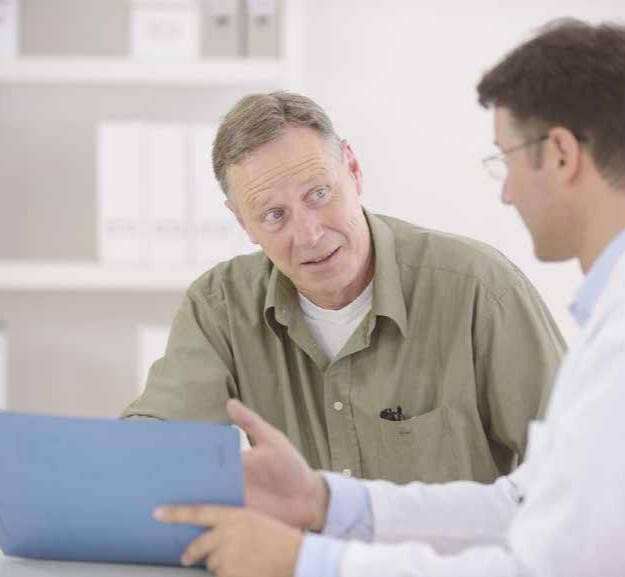 Testosterone Myths #1: Testosterone Increases Lead to Prostate Cancer
Testosterone Myths #1: Testosterone Increases Lead to Prostate Cancer Testosterone Myths #2: Increased Testosterone Leads to Violent Behavior
Testosterone Myths #2: Increased Testosterone Leads to Violent Behavior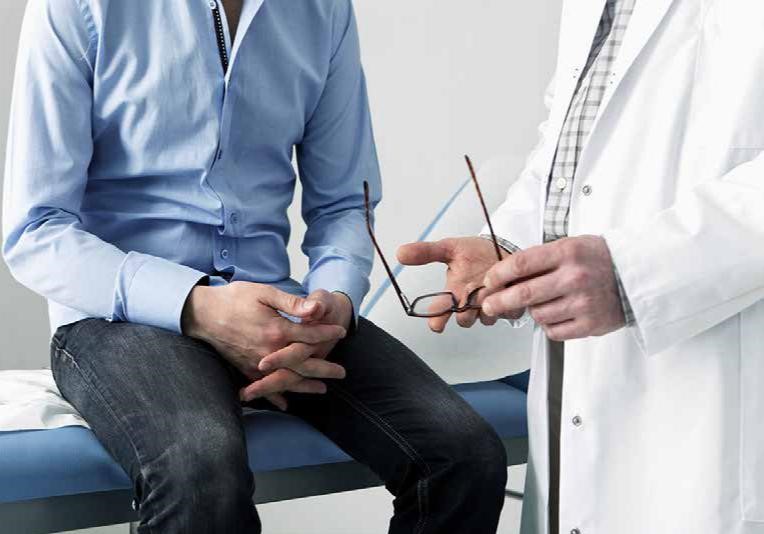 Testosterone Myths #3: Any Testosterone Increase Will Create Personal Social Conflict
Testosterone Myths #3: Any Testosterone Increase Will Create Personal Social Conflict Testosterone Myths #4: Testosterone Treatment increases Cardiovascular Risk
Testosterone Myths #4: Testosterone Treatment increases Cardiovascular Risk